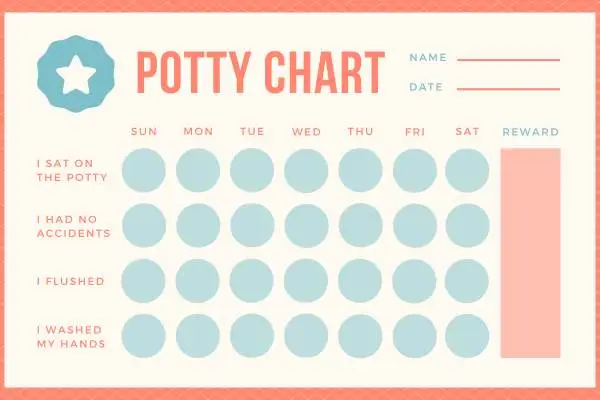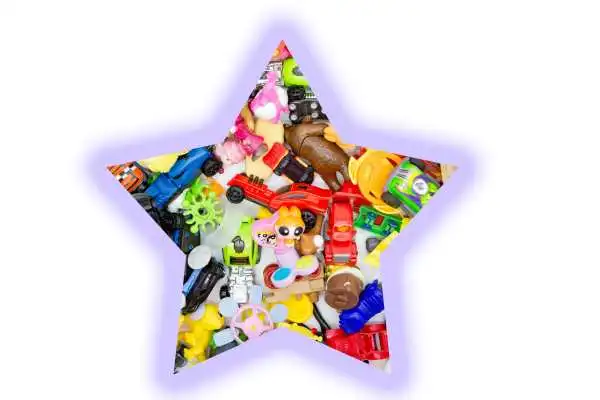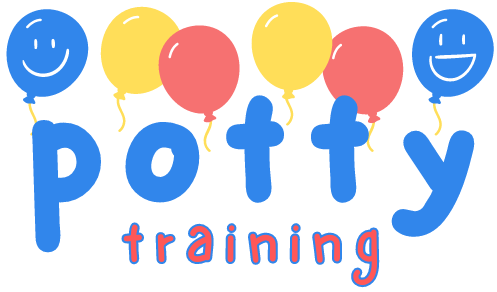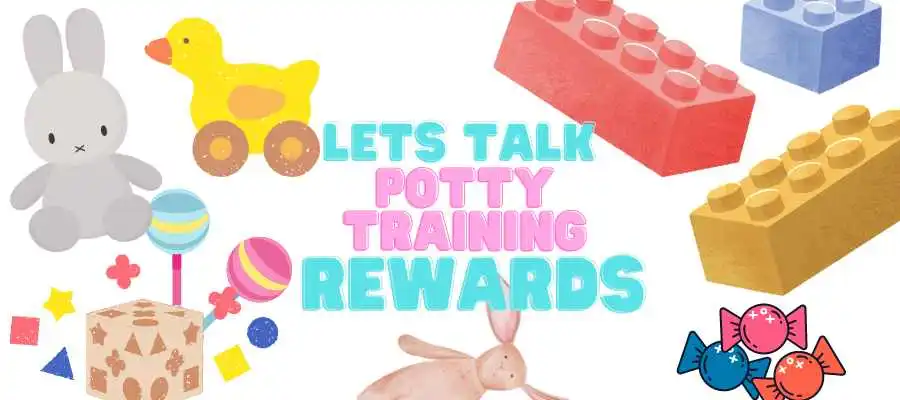Potty training is a big step for kids and parents. I’m here to talk about using rewards to help with potty training. Many parents wonder if giving rewards is like bribing their kids, and they’re worried it could have a bad effect. In this article, I’ll share my thoughts on these concerns to clear up some confusion. I’ll also suggest some reward ideas that your child might really enjoy. So, let’s dive in
Table of Contents
What is Positive Reinforcement?
In a simple word, positive reinforcement involves adding something to the environment to encourage a desired behavior, and in the context of potty training, this could be verbal praise, physical gestures like high-fives or hugs, or tangible rewards such as stickers or small treats.
The aim is to increase the likelihood that the child will repeat the desired behavior—in this case, using the potty.🙂
How Positive Reinforcement Works
The idea behind positive reinforcement is simple: when children receive something they value in response to a specific behavior, they are more likely to repeat that behavior.
This principle is grounded in behavioral psychology, where adding a positive stimulus reinforces the connection between action and reward.
Specific Praise Over Generic Encouragement
Verbal praise is a powerful form of positive reinforcement, but it needs to be specific to really work. Saying “Good job!” is less impactful than saying “Thank you for trying to go potty!” or “I’m proud of you for telling me you needed to use the toilet.” Specific praise helps children understand what they did right, making it easier for them to replicate the behavior.
Related Article: Teaching a Child How to Wipe After Poop
Related Article: The Best 7 Tips to Potty Train a Stubborn Child?
Role of Rewards in Potty Training
Rewards, such as small candies, stickers, or toys, are additional forms of positive reinforcement. These tangible rewards can motivate children to use the potty, especially in the early stages of training.
Consistency and Gradual Phase-Out
It’s important to be consistent when you use rewards. Parents should try to give rewards right after the child does what they’re supposed to, because waiting too long makes the rewards less effective.
As your child gets used to potty training, you should start giving rewards less often. This way, they can focus more on feeling proud of what they’ve accomplished, rather than relying on rewards every time.
Keeping Rewards Manageable
Rewards should be small and manageable to avoid creating unhealthy expectations. For example, giving one M&M for a successful pee and two M&Ms for a successful poop is a simple and effective approach. Larger rewards, like a candy bar, are discouraged due to the frequency with which children use the potty.
Adjusting Expectations as Children Progress
As children gain mastery in potty training, parents should adjust their expectations and raise the bar. This might involve encouraging children to initiate going to the potty on their own or extending the time between accidents.
By gradually raising the bar, parents can maintain their child’s interest and motivation without overwhelming them.
Related Article: When Should I Be Concerned About My Toddler Holding His Pee?
Related Article: Potty Training 101: Tips, Challenges, and Realistic Expectations
Suggestion for Potty Training Rewards
By now, you understand how the reward system in potty training works and how it can benefit your child when used correctly. Let’s look into some practical tips and suggestions for choosing the best rewards to help you get started.

Using a Sticker Chart for Potty Training
A sticker chart is a fun way to track and reward your child’s potty training progress. It’s simple to make, and children earn stickers when they use the potty:
- One sticker for pee: When your child successfully uses the potty to pee, they get a sticker.
- Two stickers for poop: If they use the potty for poop, they earn two stickers.
To make this activity more engaging, let your child pick out the stickers. This involvement makes them more excited to earn them.
Creating a Reward Bin
A reward bin is a box or container filled with small prizes that your child can earn by filling their sticker chart. Here’s how to create one:
- Decorate the bin: Use markers, stickers, googly eyes, or other craft items to decorate the bin with your child. This makes it special and personal.
- Keep it out of reach: Place the bin somewhere high, like on top of the fridge, where your child can see it but can’t reach it.
Selecting Prizes for the Reward Bin

When it comes to choosing prizes for the reward bin, it’s best to let your child have a say. A trip to the dollar store can be a fun way to pick out small, inexpensive prizes. Some ideas for what to include are:
★Hot Wheels cars
★Barbies or other small dolls
★Stuffed animals
★Books
★Other small toys
Aim for between 10 and 20 prizes in your bin. Keeping the prizes small and simple makes it easier to manage.
Celebrating Potty Training Milestones
Potty training is an important step in your child’s journey to independence. It’s not just about learning to use the potty—it’s also about controlling the bladder, managing clothing, and washing hands. Celebrate these milestones with your child to keep them motivated. Some ideas include:
- Giving them a sticker
- Having a dance party (I mean just you and your child😉)
- Letting them pick a prize from the reward bin
Bribery vs. Rewards
It’s important to understand the difference between bribery and rewards:
- Bribery is when you offer a reward to get someone to do something. In the context of potty training, it would be saying, “If you use the potty, I’ll give you a toy.”
- Rewards are given after the desired behavior is displayed. In potty training, that means giving a reward after your child successfully uses the potty. It’s a way of reinforcing good behavior, not a condition for doing it.
Using Simple Language for Potty Training
When explaining potty training to your child, keep it simple. Avoid complex terms or long explanations. Focus on straightforward concepts like:
- “We’re done with diapers.”
- “Pee and poop go in the potty.”
By using simple language, you help your child understand what’s expected and make the potty training process smoother.
Potty training can be a challenging process, but using rewards can make it more fun and encouraging for both you and your child. Remember to be consistent with rewards, and give them right away after your child uses the potty. As they get better at it, gradually reduce the rewards to help them focus more on their own sense of accomplishment. Keep things simple and let your child know you’re proud of their efforts. With patience and encouragement, your child will be potty trained in no time!

